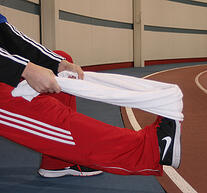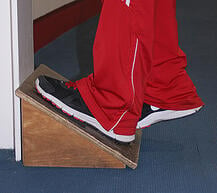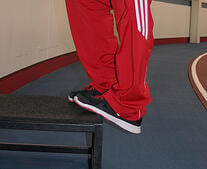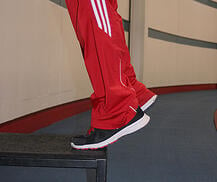March can be a good starting point for goal setting and modifying resolutions (not to mention contemplating the time we have until swimsuit weather arrives). Regardless of individual intentions and goals, starting a new routine, becoming a regular at the gym, not properly warming up and cooling down and breaking in new sneakers all have one nagging issue in common: shin splints.
What Is a Shin Splint?
A shin splint is described as pain in the lower leg and is typically located on the front, inside portion of the shin bone (tibia). Some individuals experience tenderness, numbness, and even throbbing in the affected area. The pain usually lasts only during exercise and will go away when we are at rest.
What Causes Shin Splints?
Shin splints are mainly caused by running form, running on hard surfaces, overuse/overtraining, nonsupportive shoes, and genetics (flat feet). While the best treatment for shin splints remains simple rest, it is permissible to exercise if proper post-exercise treatment is administered. This treatment includes icing the shin and keeping it elevated for 10 to 15 minutes after your exercise session.
Preventing Shin Splints
Shin splints are treatable and preventable. Do not let them beat you in your quest for fitness and wellness prosperity. Take the necessary precautions and be aware of how your body is responding to your training. For expert advice on footwear, ask your family podiatrist or footwear professional. You can also help your cause by avoiding running on hard surfaces, adjusting workout intensity to a gradual increase (instead of “no pain, no gain” mentality), and making sure you are wearing proper shoes that fit your foot type.
Stretches For Preventing Shin Splints

 For shin splint prevention, begin a stretching routine that includes standing calf stretches (shown to the right using a slanted service), Achilles tendon stretches (shown using a towel for better range of motion), as well as a well-rounded dynamic warm-ups.
For shin splint prevention, begin a stretching routine that includes standing calf stretches (shown to the right using a slanted service), Achilles tendon stretches (shown using a towel for better range of motion), as well as a well-rounded dynamic warm-ups.
It is also important to strengthen the muscles in the lower leg with toe raises and toe presses (shown below using a step).


Please contact a NIFS Health Fitness Specialist to help you set up exercises and stretches that are appropriate for your fitness level and goals.
Be well, and best wishes!If you are interested in training for a half or full marathon, NIFS has programs just for you! Contact Stephanie Kaiser for more information.
This blog was written by Thomas Livengood, Health Fitness Specialist at NIFS. To find out more about the NIFS bloggers click here.
